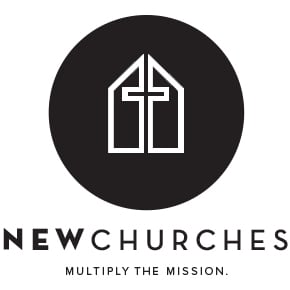By Ed Stetzer: It was just one year ago when I came on as executive director of the Billy Graham Center at Wheaton College. In that time, we’ve hired six new staff here. Three are from different racial and ethnic backgrounds than I am and an additional two are women.
And diversity is something I’ve intentionally sought out, and one which I believe is greatly beneficial to both us and the mission Jesus has called us to carry out.
That’s (most) of our team (with families) in the picture above.
As church and organizational leaders, diversity among our staff, and even more so in our leadership team, has the opportunity to transform our churches and ministries. This is not to say it’s easy. When people from different cultures come together, it takes time to learn how to work together. For example, see my staff respond in disagreement via this series here. (See my article, then John Richards’ response, and then Michael Lee’s response, and then my response to everyone in the conversation.)
It takes work, but it’s worth it. Let me share three reasons I believe this is the case, and then share a few challenges you may face as you intentionally seek diversity.
Having diverse leadership, first, gives us the opportunity to experience more of what we will experience in eternity.
In eternity, we know that there will be men and women from every tongue, tribe, and nation (see Rev. 7:9). Yet the church here tends to be divided. Too often, we seek to surround ourselves with those like us. This only reinforces silos which Christ desires to be torn down. We are all one in Christ. Martin Luther King once said that Sunday morning was the most segregated time of the week. The longer we prolong this segregation, the more we delay the benefits of worshipping with others and working together for His glory.
Second, having diverse leadership helps us to reflect eternity well here.
The Church is supposed to be the visible representation of the invisible kingdom. If it doesn’t have the diversity of leadership that we would expect in something that is a reflection of the Kingdom of Heaven, then those outside the Church may find other places to turn. Our diversity is an outward expression of our desire to see people from all backgrounds come into our churches! Seeking multicultural leadership is one way to display our commitment to reach our world—our whole world, not just those like us—for Jesus.
Third, having diverse leadership requires us to take the time to learn about others.
We learn the differences in cultures, contexts, and people. In doing so, we are able to act like Jesus. We are able to be people of service, people of the towel. Jesus took up a towel and washed His disciples’ feet. In a sense, as we learn from others and their cultures, we humble ourselves and our cultures. Likely, we will find that we actually appreciate many differences and begin to integrate those into the very fabric of our churches!
Challenges
With all the opportunities that come with having diversity in our leadership, we’d be naïve not to think there were some challenges as well. Let me share at least two challenges.
First, the reality is that if we are going to be in a multicultural church, things are going to go more slowly.
Homogenous units tend to grow more quickly because people know each other and they invite their friends. Your church is more likely to grow slowly as you include diversity in your leadership. You will need to take the time to get to know one another. Some cultures tend to lead more directly, others more indirectly. Some tend to push hard to get things done, others are more thoughtful and contemplative.
Second, it can be harder for non-Christians who are not accustomed to crossing social and cultural barriers to find a way to quickly connect.
Integrating different cultures into leadership can lead to an amazing representation of the true Body of Christ if done well. But if done haphazardly and too quickly, it can create a feeling of chaos within the church, especially for those who are new to the church. As we integrate diversity in our churches, we must do so strategically and with the big picture in mind. For instance, how does including X into our culture benefit us? What challenges will it create? As we grow in diversity, we must do so with not only our congregations in mind, but also those we are trying to reach. They must be a core audience for us.
Developing a leadership team that is diverse racially and ethnically requires hard work. It must not be done for the sake of being done, but instead with the mission of God in mind. If you’ve got the right people on your team, anything is possible. I encourage you to take the risk. Both you and the church you lead will be better for it.
Source: Why and How Multicultural Leadership Strengthens You, Your Team, and the Faith
